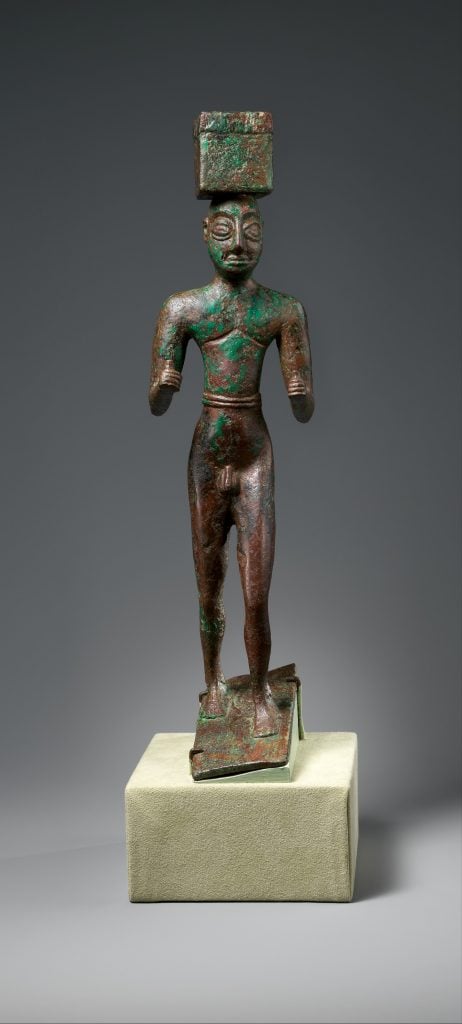Museums & Institutions
The Met Returns an Ancient Sumerian Sculpture to Iraq
The repatriation follows the museum's recent appointment of a head of provenance research.

The repatriation follows the museum's recent appointment of a head of provenance research.

Adam Schrader

The Metropolitan Museum of Art in New York City has returned an ancient Sumerian sculpture to Iraq following an internal review by the institution, which recently appointed a head of provenance research.
The restitution of the Sumerian sculpture happened at a ceremony in Washington D.C., the Met said in a statement. The return takes place just weeks before Lucian Simmons, the former head of Sotheby’s restitution department, is expected to head up the museum’s provenance research team in May. Simmons has worked on restitution and provenance matters since 1997 but will now lead a team of researchers working across many of the museum’s 19 collecting areas.
The copper alloy figure dates to 2900–2600 B.C.E. and depicts a nude man carrying a box on his head, according to the museum’s listing of the work—which now notes that it has been returned. The museum called it a “fine example” of Sumerian sculpture in metal.
“Only certain categories of people were represented as nude in the Early Dynastic period: priests, athletes, mythological heroes, and prisoners of war,” the museum wrote. “This figure, reminiscent of scenes depicting priests carrying offerings, carries an object that might be a temple foundation deposit or offering related to its building.”
The sculpture was acquired by the museum in 1955 from dealer Elias S. David, who specialized in Near Eastern art before his death in 1969. It was flagged for possible restitution by researchers with the museum after an internal review. Museum officials then met with Nizar Al-Khairallah, the Iraqi ambassador to the United States, to offer its return.
“The Met is committed to the responsible collecting of antiquities and to the shared stewardship of the world’s cultural heritage,” said Max Hollein, the museum’s director. “We are honored to collaborate with the Republic of Iraq on the return of this sculpture, and we value the important relationships we have fostered with our colleagues there.”
Both Simmons’s appointment and the restitution come as the museum, like many others, are facing increased attention from law enforcement and diplomats. Last year saw the Met return artifacts to Italy, Greece, Turkey, China, and Cambodia—some of them seized by the Manhattan D.A. as part of investigations into collector Michael Steinhardt, and dealers Subhash Kapoor and Douglas Latchford. In March 2023, a report by the International Consortium of Investigative Journalists found that more than 1,000 antiquities in the museum’s collection have links to traffickers.
Simmons, when he takes the helm, will be responsible for leading such repatriation initiatives for the museum. He will work with curators in their respective departments “to confirm that proper research is undertaken” on all objects in the collection or entering through acquisition that can be considered cultural property or “should be examined for their Nazi-era provenance.”
“I am thrilled at this opportunity to bring my experience working on provenance and cultural property issues to the Met, which has been a leading voice on these topics in the global art community,” Simmons said. “I look forward to collaborating with the exceptional staff already focused on this important work and to furthering the Museum’s mission.”